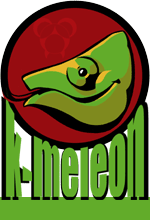K-Meleon
K-Meleon has 3 main types of extensions: macros, XUL-based extensions, and K-Meleon Extensions. Below you'll find references and examples for each type. Visit the extension forum to share your extension or ask for guidance.
Macros
Macros are the simplest type of extension and the easiest to create. Macros are stored in K-Meleon macro module (.kmm) files. Any text editor can edit and create .kmm files. They are installed and uninstalled by saving them to a macros/ folder. The majority of extensions for K-Meleon are macros.
K-Meleon Extensions
K-Meleon Extensions can include macros, but also include components that can't fit into a single text file like graphics, preferences, javascript (.js) files, CSS, and HTML pages. A K-Meleon Extension is a .7z file that matches the file structure of K-Meleon. K-Meleon Extensions can include an initialization (.ini) file with installation instructions. If the .ini file is present, the K-Meleon Extension manager can install or uninstall the extension. If not, the extension must be installed manually.
XUL-based extensions
XUL-based extensions often target applications like Firefox, SeaMonkey, or Pale Moon where the interface is also XUL-based. K-Meleon uses the native Windows API for its interface. Jsbridge is a Kplugin built into K-Meleon since version 74. It allows a XUL-based extension to interact with K-Meleon's interface, configurations, and macros.
XUL-based extensions are distributed as .xpi files. Any xpi file can be extracted and examined. They are .zip archives except for the extension. To compile a XUL-based extension: zip the root folder and change the extension from .zip to .xpi. Check out these excellent extensions in the forum to learn from:
- Kris88's screenshot extension:
http://kmeleonbrowser.org/forum/read.php?9,153889 - Adodupan's restart extensions:
http://kmeleonbrowser.org/forum/read.php?1,143142,143159

 English
English